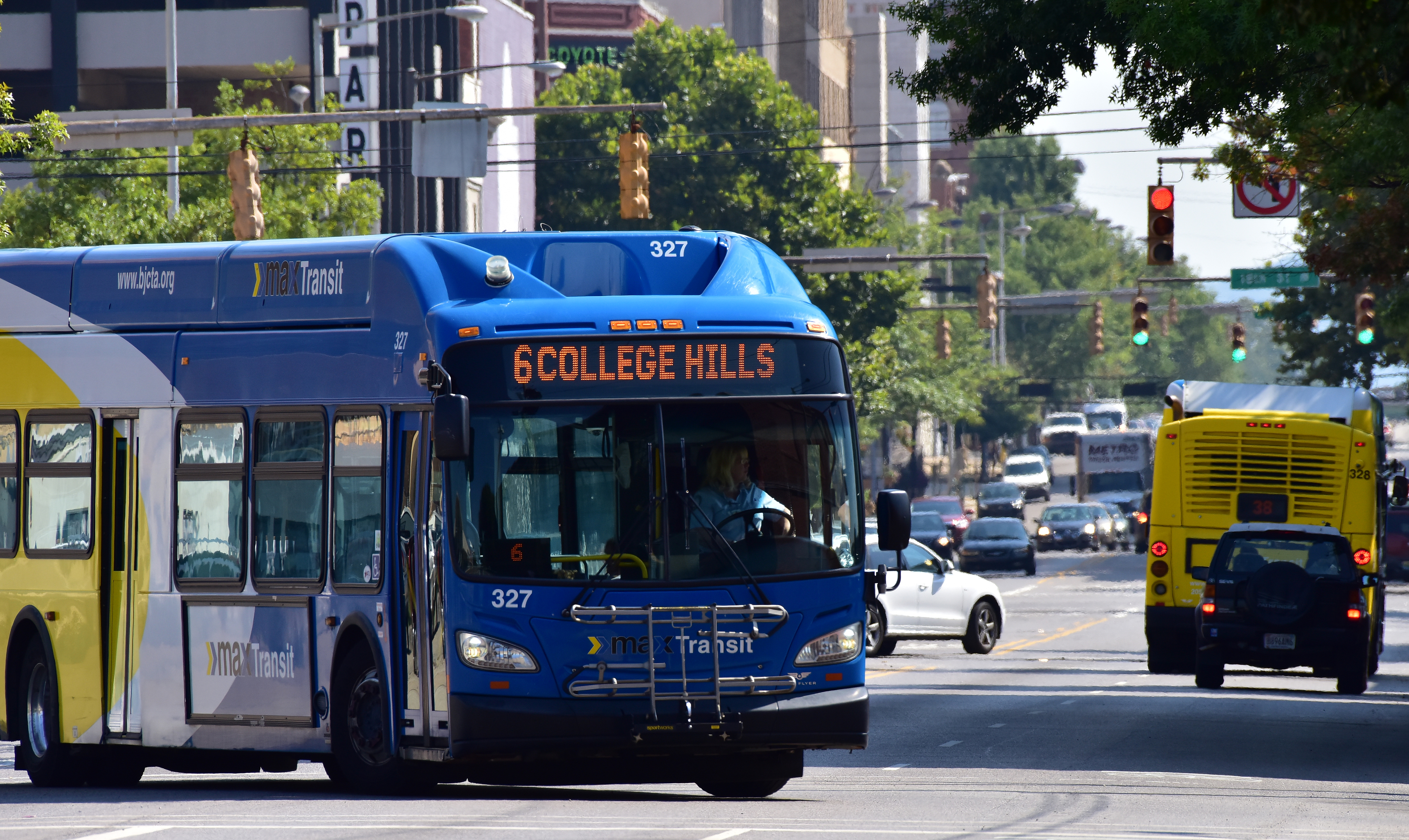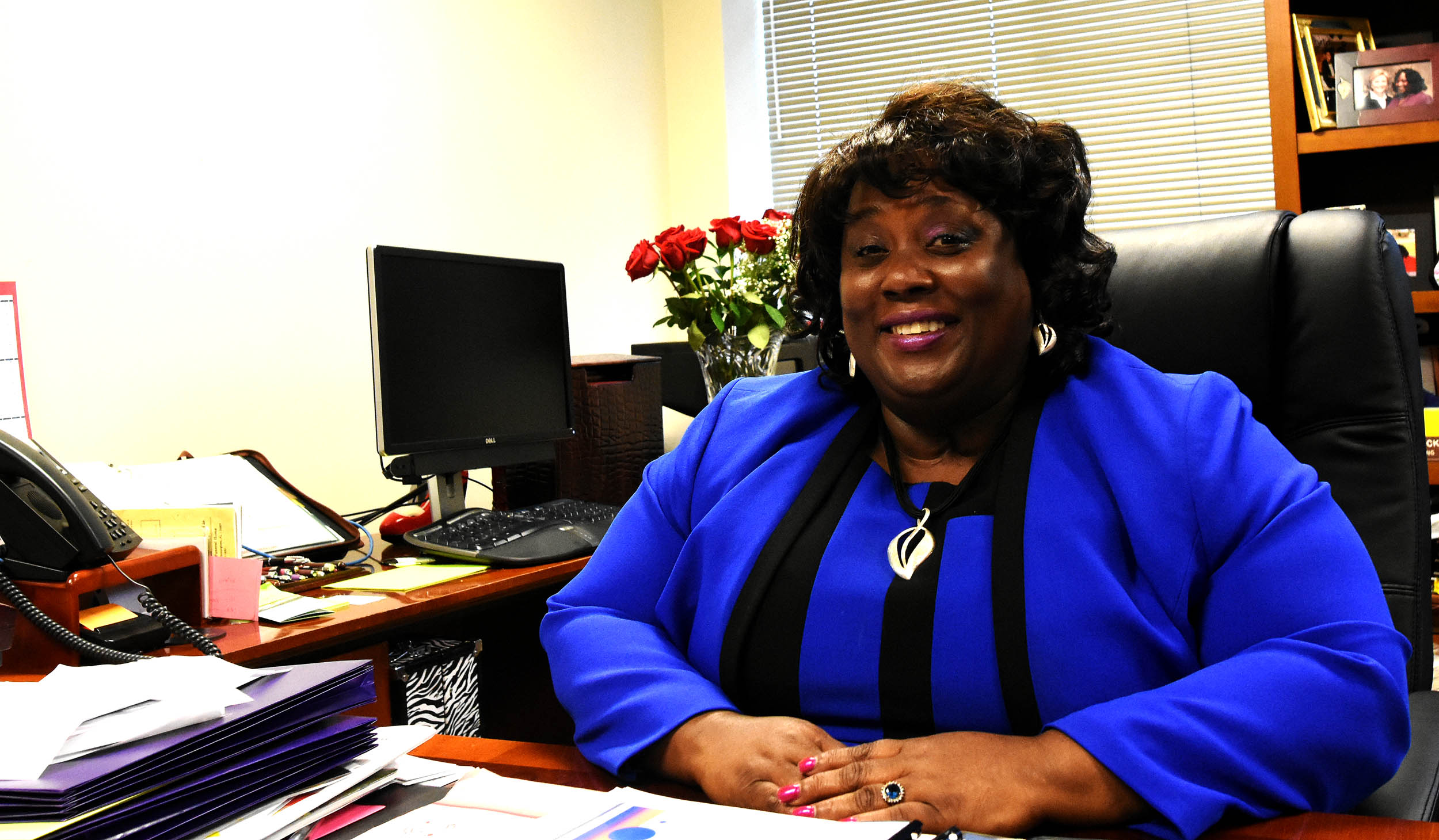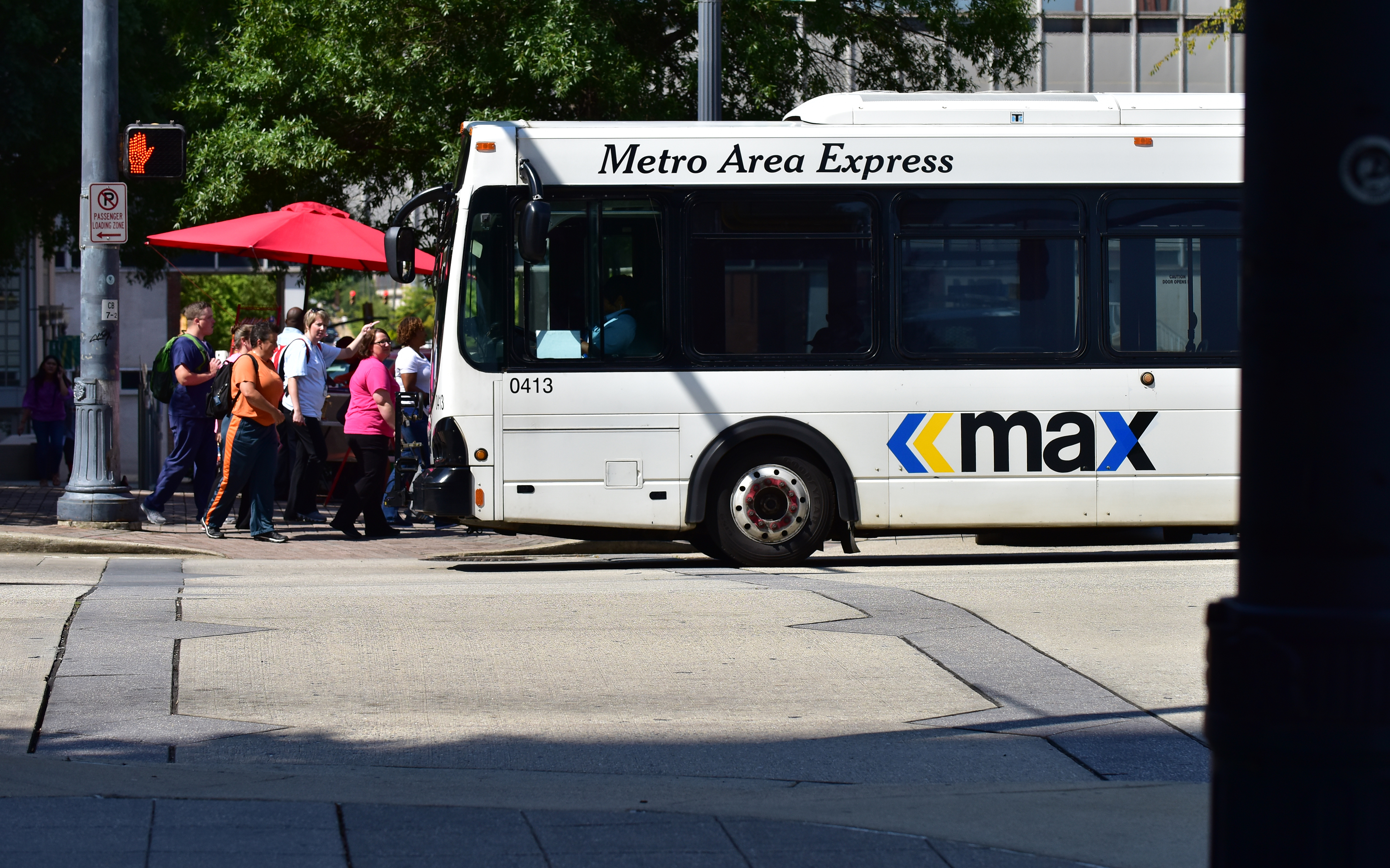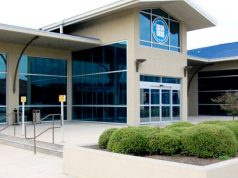By Solomon Crenshaw Jr.
For The Birmingham Times

Riding a Birmingham city bus without her mother for the first time was a milestone for Barbara Murdock, who grew up in South Titusville’s Belvedere Circle.
“I remember when I was 13. That’s when my mom let me ride by myself,” the Ramsay High School alum said. “To be able to ride downtown to Pizitz and Loveman’s when I was 13 was a rite of passage.”
Today, Murdock’s concern goes well beyond her solo trips to downtown department stores. Murdock, 57, was named executive director of the Birmingham Jefferson County Transit Authority (BJCTA) in August 2016 —and now she is concerned about the three million riders who board the system’s 86 fixed-route buses, 30 paratransit vehicles, seven vans, and eight trolleys every year.
She knows that 98 percent of those riders are African-American, and at least 90 percent depend on transit to get to work, doctor appointments, and other destinations that are important to their lives.
She knows that patrons who miss their bus likely have to wait an hour for the next one to arrive. And buses don’t always go to where patrons want or need them to go.
A New Vision
Murdock knows the system needs to improve—and, she says, a better day is coming. She cites a line from the Bruno Mars hit “Uptown Funk” to make her case. Playing the song on her phone, she declares, “Don’t believe me. Just watch.”
“I can see a better bus system for us,” Murdock said. “I see it. I have the vision. I see a newly branded system. I see choice riders getting on the buses. I see us providing service for 100,000-plus people during the 2021 World Games in Birmingham. When you’ve got that vision in front of you, you can’t let naysayers stop you.”
Few know as much about the system as Murdock. She served as director of marketing for the BJCTA from 1987 to 1993. She returned to Birmingham as chief of staff for the BJCTA in February 2014, after working as a management consultant with the U.S. Department of Transportation. And she was appointed interim director in October 2015 before unanimously being named executive director last month.
Murdock oversees a city transit system that has become the punchline of an endless stream of jokes for many, but the executive director said she has to take the verbal punches and keep moving forward.
“All we need is support and additional financing,” she said. “As long as we keep a safe, stable system, I think we’ll get the buy-in eventually. It’s going to take a minute. It’s not going to happen tomorrow. But if I didn’t see it, I wouldn’t be sitting here in this chair.”
Currently, Murdock works from the fifth floor of the 2121 Building, which the BJCTA calls home until the authority moves into the intermodal facility that’s being built on Morris Avenue. That transit hub will serve Amtrak passenger rail service, as well as Greyhound and Megabus intercity buses, the BJCTA’s MAX buses, and a shuttle to the Birmingham-Shuttlesworth International Airport.

Steps to a Stronger System
Transit has been the subject of several meetings over the past few weeks. Patrons have met to view maps and charts related to a planned system with dedicated bus lanes and traffic light priority for buses. Meanwhile, the system’s routes are being evaluated to determine which ones are no longer efficient and can be eliminated to strengthen the system.
“For the last 30 years, transit has not been the viable option that it should be in a metropolitan area this size,” said Charles Ball, executive director of the Regional Planning Commission of Greater Birmingham. “Residents in this service area sometimes have been left in a bind trying to get from point A to point B. Transit currently does not go everywhere it should go.”
Joseph Baker, founder of the I Believe in Birmingham Facebook group, also has been involved in improving the transit system.
“It’s all about promoting better development within the city, and transit is at the very core of that,” Baker said. “If this service is dependable and efficient, you may see folks start to do development along this line. Add in living facilities and new businesses, all of which will benefit directly from having this present within the community. The better and stronger this system is, the easier it is to persuade folks to ride the system, to make investments in it.”
Hub and Spoke
The City of Birmingham has had a public transportation system for over 130 years, starting in 1884 with the Birmingham Street Railway Company. In 1972, the State Legislature passed legislation creating The Birmingham-Jefferson County Transit Authority (BJCTA) which took over transit operations from private operators. In 1985, BJCTA developed and aggressively marketed the “MAX” – Metro Area Express — tag name, now commonly used.
The city bus system has been based on a hub-and-spoke model: all buses set out from the downtown hub, go out on their respective routes, and return to the downtown station. This yields a situation in which an hour passes before the next bus comes to a bus stop. Such lengthy lag times, or headways, make transit less popular and some of the routes outdated.
Murdock acknowledged that the 38 routes running today nearly mirror the routes when the system began more than four decades ago. She recalled Birmingham Mayor William Bell joking that the No. 6 bus route is the same as it was when he grew up in Titusville. Another example, Murdock said, is a bus that runs through a largely barren section of Zion City just as it did years ago when the area was much more densely populated.
“The shoe is the same size it was in 1972, but it no longer fits,” she said. “Nobody lived downtown in 1972. Now you have these millennials, you have all this traffic downtown.”
But developing a strong transit system is costly: each bus—Murdock likes to call them her Ferraris—costs $500,000.
“Imagine having a fleet of 86 of them,” she said, adding that limited funding has kept the system from developing. “We’ve been able to just babysit, keep the doors open, make sure everybody goes to work on time, does their jobs. For growth, however, we need funding. Until we can get a dedicated funding base and have some success with some of these other things, it’s basically a stagnant system today.”

Funding Options
Murdock is optimistic that the BJCTA can get the funding it needs. For starters, the authority has received a $20 million Transportation Investment Generating Economic Recovery (TIGER) grant from the U.S. Department of Transportation.
“By spring, we’ll start seeing money roll in on the Bus Rapid Transit (BRT) effort to continue our planning, which will take us to 2021,” she said.
The BRT is similar to a light-rail system, but its vehicles have rubber tires. It features dedicated lanes for its buses and electronic systems that give its buses preference as they approach traffic signals.
“In the next three years, we hope to have the BRT system up and running,” said Murdock.
In addition, the BJCTA has pursued grants it had not previously sought. It sells some of the compressed natural gas that fuels its buses to truck drivers, school bus drivers, and hotel shuttles. It is purchasing property around where stations will be built in its new intermodal system to foster development and bring in funds. It also has embarked on efforts to expand the system into other areas and to sell naming rights for new stations that will be added to the redeveloped system.
“Those are some of the ways I’m looking at trying to generate income,” Murdock said.
The money likely will not come from riders, though. Patrons pay $1.25 to ride the bus—one of the lowest fares in the nation, according to Murdock.
“I don’t feel we can raise the fare until we give you a better product,” she said. “We’re under construction. While we’re under construction, we want riders to show us how they’d like their rooms to look. We want to build this system on input from the people who use it and then move forward to find a funding base.”
Murdock said she can already see improvement in the pride MAX drivers and other workers have in their product. That must continue, she says, via continuing efforts to ensure that buses are clean, there is a degree of safety, drivers are courteous, and buses are on time.
“Public transportation must be an integral part of the overall economic development growth plan for the Birmingham–Jefferson County region,” Murdock wrote in her Executive Director Action Plan. “The changes needed will require continuous advocacy and aggressive grant management, as well as development of new revenue streams, joint development, and partnerships … to show that there is no more business-as-usual in public transit in the Birmingham–Jefferson County area.”




